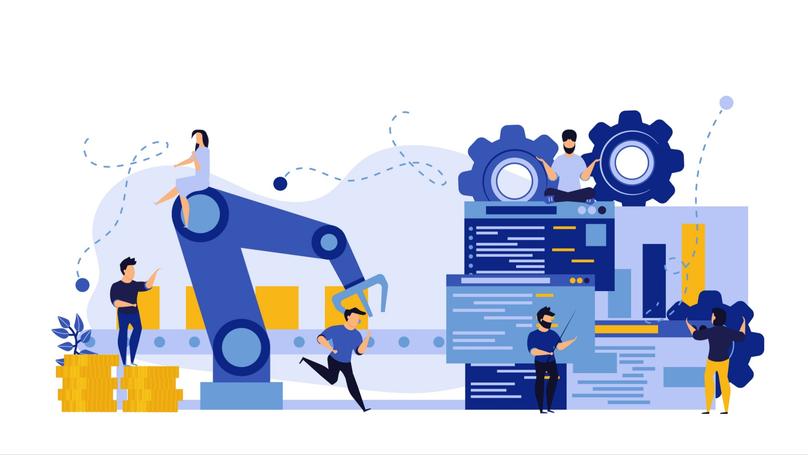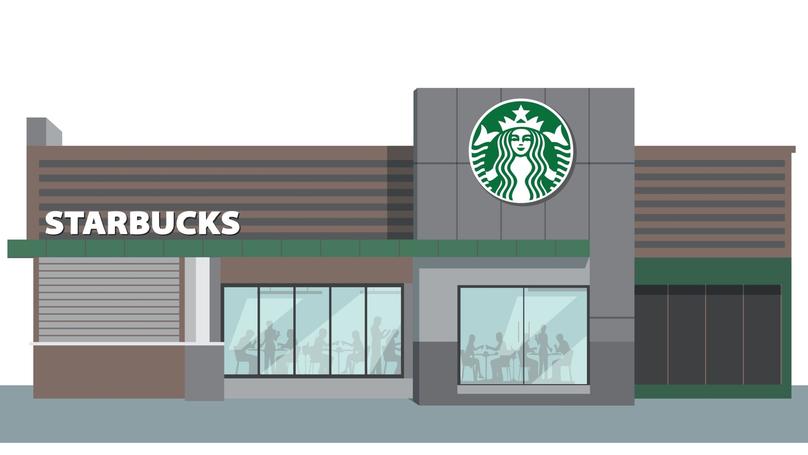Value chain

What is a value chain?
A product value chain is a certain sequence of activities that ensures the production of goods. In other words, it comprises all activities of a manufacturing company - from conception, a business plan, and purchase of raw and necessary materials - to produce goods and customer service features.
In a broader and more scholarly definition, a value chain is one of the strategic analysis tools. It involves a detailed scrutiny and improvement of each production stage. This tool is usually used when a business urgently needs to improve its internal processes and stabilize its position in competitive markets. Essentially, the key objective of a value chain is not just to improve productivity but also to cut costs.
Michael Porter's value chain model
A value chain as a separate component of strategic planning was formulated in 1895 by Michael E. Porter, an American economist and recognized expert in competition in international markets analysis, professor at Harvard Business School. In Competitive Advantage, he described the value chain as identifying a competitive advantage by analyzing a company's key performance indicators. Porter argued: "Competitive advantage cannot be understood by looking at a firm as a whole. It stems from the many discrete activities a firm performs in designing, producing, marketing, delivering, and supporting its product».
If management has in-depth knowledge of how all internal and external processes work, how they interact with each other, and what impact they have on the entire business system, this translates into features that distinguish the product from others on the market. Thus, each process must create value and a competitive advantage and generate profit.
According to Michael Porter, the value chain comprises five main activities of any firm. They are:
-
Inbound logistics
-
Operations;
-
Outbound logistics;
-
Marketing and sales;
-
Service.
However, in his concept, Porter also identifies support activities, also referred to as secondary, supplementary, or auxiliary ones. They include:
-
Firm infrastructure;
-
Human resources (HR) management;
-
Research and development;
-
Procurement
By gradually moving from basic logistics processes, such as procurement and necessary materials supply, to service-that is, customer service activities-a business reaches a profitability ratio or the so-called margin. A value chain is intended to increase the margin and maximize return on investment at the lowest possible cost.
Value chain analysis
Analyzing the above activities in the value chain implies that they are viewed as a system of interrelated functions and contribute to improving these processes' profitability and efficiency while cutting resources and other costs. Let us take a closer look at each activity type identified by Michael Porter.
Inbound logistics include functions related to receiving, processing, and warehousing externally sourced materials, parts, raw materials, and other inventories required for production. These resources are called inputs, which can be suppliers, for example.
Operations are activities necessary to convert inputs into finished products. Such processes transform inputs into the so-called outputs, i.e., goods sold at higher prices that exceed materials and production costs, generating a profit. That's why operations also include branding, product design, and packaging.
Outbound logistics involves distributing products to the target audience, specifically the systems of storage and delivery of final goods to consumers. In other words, it refers to any activity involving delivering a product directly to the customer.
Marketing and sales involve producing and advertising finished goods to potential consumers. These activities aim to enhance the visibility of a retail brand and its individual products.
Service is also referred to as after-sales service. It includes activities to interact with and enhance customer experience, such as customer support service, installation, maintenance, repairs, refunds, etc.
Production hitches, management problems, and process deficiencies are easily detected and can be quickly remedied. This is not the case with auxiliary activities that support the primary ones:
Infrastructure comprises a company's systems, departments, branches, units, and management team. It covers all legal, administrative, and organizational matters, bookkeeping, public relations, and so on-in other words, all functions that support day-to-day operations.
Human resource management or HRM involves hiring and training specialists, providing proper work conditions, fostering a certain corporate culture, and maintaining a non-toxic environment and a healthy psychological climate for the comfortable work of each employee and the effective performance of the team as a whole. In fact, it is the HR departments that are crucial for the company's progress because responsible people in the team, capable of finding and attracting talented, enterprising, top-notch experts, are a significant advantage that helps the business to overtake its competitors and take a leadership position in the industry.
New development involves integrating various innovative technologies with production at different stages to improve operations. These include special software for automating wage computation, AI crafting PR campaigns, and robotic customer service procedures.
Moreover, some companies develop meta-universes, neural networks, and programs to optimize resource-intensive processes and attract potential customers' attention.
Procurement involves searching for and maintaining relationships with new external suppliers, pricing policy negotiations, and other activities to obtain materials, resources, and information. For example, concluding contracts on favorable terms, agreeing on product requirements, etc.
Though each sub-activity of a company is considered individually, paying attention to their interrelationships is essential. For example, poor hiring practices and the resulting unqualified workforce will lead to challenges and inefficiencies in many other business systems. So, raw materials and various other factors affect finished product quality-each worker's professionalism, pioneering methods and innovations used in production, the infrastructure, and the interaction of the company's divisions.
Example of a value chain

We can track the value chain concept in Starbucks's operations. The large-scale coffee shop chain is a clear leader in its niche, confidently outperforming its competitors. Well aware of its advantages, it uses them to attract an ever-larger audience.
The Starbucks value chain starts, as it should, with inbound logistics. This includes the procurement process of sourcing high-quality grains from certified producers in Central Africa and the US. Then, the company roasts the beans according to its own recipe in conformity with the quality standards. The beans are then packaged and shipped to special distribution centers or directly to distributors.
Further processes are considered within the framework of operations occurring directly in coffee shops. After that, all activities and processes occur in coffee shops. It is no secret that the corporation owns more than 30,000 parlors and coffee shops in 80 countries. The standards, product quality, and service requirements are uniform across all outlets and strictly controlled.
After the product is ready, the coffee is sold directly to end consumers in B2C (business-to-customer). At the same time, Starbucks actively works to increase its sales and enhance marketing development. The corporation pays keen attention to branding and service quality to attract new and retain regular customers. Starbucks is active on social media; it regularly runs themed posts and videos and offers interactivity to its followers.
Service and customer care are Starbucks' top priority. To this end, the corporation provides special training to its team members. It pays keen attention to its coffee shops' interiors to offer comfort and inspire visitors to stay there longer, order another cup of coffee, and remain in a pleasant place. It is believed that the Starbucks creators wanted the coffee shop to become an indispensable link between work and home, which people visit simply because they just want to drop by.
The corporation also pays appropriate attention to its support or auxiliary activities. Thus, even the employees who work in departments far removed from the coffee shops, such as legal or finance, regularly take corporate training, attend master classes, use specific Starbucks-specific frameworks, and embrace the brand's philosophy.
Moreover, the corporation provides its employees health insurance coverage, paid vacations, corporate pension plans, tuition subsidies, and many other benefits. Such HR policy enables building a motivated and cohesive team with a vested interest in their work and the brand's progress.
Another prime example of a value chain is Trader Joe's, a US supermarket chain with about 500 stores, mostly in California. As a private company, its workers fully know its value chain specifics. Still, even a simple visit to a Trader Joe's store is enough to identify the five main value chain activities.
So, inbound logistics comprise procurement, goods receipt and placement on the shelves, and stock-taking. At the same time, unlike traditional supermarkets, Trader Joe's does all this at the regular store opening hours, i.e., in parallel with its customers choosing goods. This decision was made to save a significant amount of money. In addition, such logistics have a particular impact on customers - it shows that the supermarket staffers are working right now for their comfortable and convenient shopping experience.
Since supermarkets don't process raw materials and other products but sell finished goods, their operational functions include careful selection of the goods we see on their shelves. Typically, Trader Joe's offers goods that consumers would be hard-pressed to find in other stores. More than 80% of the supermarket's offerings are private-label products. Jointly with its chefs and other partners, Trader Joe's also offers tasting programs as part of its operations. This ensures better quality of the products sold by the company and their continuous improvement.
As for outbound logistics, Trader Joe's does not offer a delivery service. As part of this operation, the supermarket chain has devised internal logistics to navigate the huge chain stores. In addition, the supermarkets often hold tastings - they create a more lively and active atmosphere and encourage consumers to buy.
Also, Trader Joe's does little or no conventional marketing compared to competitor chains. The supermarkets aim to create a unique brand, an innovative culture, and close ties with their customers. Unique product design, labels, store design, and Trader Joe's image in the eyes of customers are specially developed for the trademark.
Customer service is a top priority for Trader Joe's, so the company pays the most attention to it. As a rule, there are many more employees than customers in chain stores. They are always welcoming, ready to help, choose a product, and give shoppers tips and recommendations. In addition, Trader Joe's has always run a refund program - its customers can get their money back if they don't like their purchases or find them unsuitable.
You can track any company's main value chain activities, whether narrowly focused, private or public, international or domestic. Accordingly, the value chain is essential for any business's successful operations.
Supply chain vs value chain

Supply and value chains are similar activities often confused or used synonymously. However, each concept should be considered separately because their functions differ.
A supply chain is a set of activities focused on sourcing the materials necessary to manufacture products and deliver them to end consumers. A supply chain is a network of producers, vendors, distributors, and retail sellers involved in creating and selling a product to the customer. In other words, the supply chain focuses on the raw materials, resources, and materials needed to produce and sell goods. At the same time, the value chain aims to offer maximum value to customers at each stage of production of goods and increase their value from one stage to another.
Thus, a supply chain is part of the operations management strategy, while a value chain is part of overall business management. A streamlined supply chain focuses on producing and distributing goods, cost-cutting, and meeting consumer demands. It has nothing to do with adding value to the final product. On the other hand, the value chain focuses on innovation, convenience, and consumer demand. It aims to secure competitive advantages and add value to the product.
The value chain will only be effective if a stable supply chain exists. At the same time, if the value chain isn't properly designed, the supply chain will produce goods that do not meet consumer interests, needs, and desires; that is, they won't enjoy consumer demand. That's why a supply chain is considered an overall value chain component. After all, it comprises activities beyond the framework of the main production ones, such as sustainable development efforts, post-sales support, customer service, company infrastructure, and HR policy. So, it is essential to competently use both tools - a value chain and a supply chain - to create the highest-value and quality product that will become the brand's signature sound and create a competitive advantage.
Management and optimization using a value chain
Value chain management (VCM) means integrating all requisite resources, from raw materials to after-sales service tools, to optimize a product and increase its value for the customer. It is a systemic approach that involves step-by-step optimization of all business processes to achieve long-term success, increase profits, and build a stable competitive advantage. There is a multitude of best practices for effective value chain management. As a rule, each is applied in line with specific business goals, but there are also more universal approaches. For example:
1. Aligning the value proposition
This message to potential customers summarizes why they should buy the brand's products or services. Such a message reflects the most obvious benefits customers will get if they buy a particular good. Each point of the value proposition identifies customer challenges and needs and ways the product will address and solve them. That's why aligning the value proposition with your audience's expectations is critical and ensuring that your products create real value for an entire market segment. This process requires an in-depth analysis and understanding of customer preferences, market trends, and competitive environment dynamics.
2. Cooperation and partnership
Building an effective value chain requires strong, trusting relationships with material producers, suppliers, distributors, and other chain links. Close and long-term collaboration helps optimize many activities, makes them more flexible and mobile, and significantly cuts costs as the company continues to meet customer needs with valuable products.
3. Implementing innovative approaches and technologies
Digital solutions can significantly improve operation efficiency and enable a seamless integration of additional processes with the value chain. For example, reliable enterprise resource planning systems (ERP) strategy, tools to analyze the supply chain performance and CRM-customer communication software will provide real-time information about all activities.
4. Continuous product improvement
Value chain management is a continuous, non-stop process that needs to be regularly monitored, evaluated, refined, and improved. This includes operational performance monitoring, identifying business processes to be optimized, and changes to be made in specific areas to improve overall production efficiency.
Customers should be at the center of value chain management because they and their decisions are critical to a company's sustainable development and success. Companies can boost customer loyalty and build trust and long-term relationships with them only if they understand their motivation, preferences, and interests by regularly collecting and processing feedback.
6. Taking care of employees
We should also consider the importance of HR policy. It is a close-knit team that creates growth and development opportunities for the entire business. That's why the most successful companies do not skimp on benefits for their staff; they actively use team-building tools and well-being programs and even provide corporate psychologists. All these efforts seek to raise employees' happiness, greatly boosting their labor productivity.
Thus, each of the above strategies helps improve the value chain activities.
Value chain in marketing

The value chain is extensively used to promote goods and services. The definition of a value chain in marketing suggests that a value chain is a business template used to study a company's activities. It is associated primarily with the development and promotion of a product from its idea to direct use by the consumer. Thus, companies use the value chain mainly to increase profits. To this end, they improve efficiency, increase their goods' value, and cut costs. We can say that the value chain enables a business to maximize profits at minimal costs.
Other pluses of the value chain for marketing are similar to the general advantages of this approach:
-
product improvement already at the development stage through a better understanding of its competitive advantages;
-
process standardization, i.e., using the most efficient methods to optimize systems and operations;
-
cost-cutting across the entire value chain by identifying unnecessary expenses;
-
resulting in higher profitability, i.e., getting more value at every stage.
Conclusions
Today, value chain management plays a key role in business operations. It enables companies to optimize all internal and external activities to increase efficiency and productivity. At the same time, the value chain helps build a stronger connection with audiences, retain loyal customers, and attract new ones.
Competitive market dynamics continue to gain momentum, so aggressive implementation of a value chain strategy allows companies to remain flexible and mobile, promptly react to the changing conditions of the outside world, respond to customer needs and demands, and create real value at minimal costs. This enables them to remain competitive, enjoy continued demand from their target audiences, and maintain visibility in the industry.























